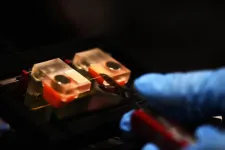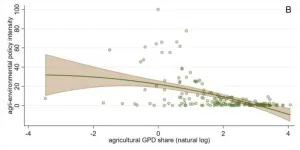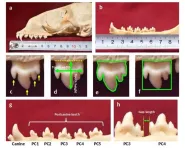(Press-News.org) HOUSTON ― The Institute for Data Science in Oncology (IDSO) at The University of Texas MD Anderson Cancer Center today announced the appointment of its inaugural cohort of IDSO Affiliates. These 33 talented scientists, clinicians and staff bring diverse expertise to help IDSO leadership and focus area co-leads advance collaborative data science projects and align the institute’s efforts with MD Anderson’s mission to end cancer.
“We are proud to welcome these exceptional individuals to the growing IDSO community, and we look forward to the collaborative work ahead of us,” said David Jaffray, Ph.D., director of IDSO and chief technology and digital officer at MD Anderson. “By engaging diverse expertise across all of our mission areas, we will enhance the rich and productive data science ecosystem at MD Anderson to deliver transformational impact for patients.”
IDSO was launched to integrate the most advanced computational and data science approaches with MD Anderson’s leading scientific and clinical enterprise, significantly improving patients’ lives by transforming cancer care and research.
The affiliates were identified based on their existing contributions to IDSO or were recruited to MD Anderson specifically for their data science expertise. Affiliates are approved for a two-year term based on their qualifications, alignment with, and commitment to IDSO projects and focus areas. The inaugural IDSO Affiliates include:
Kadir Akdemir, Ph.D., assistant professor of Neurosurgery
Lee Andrews, executive director of Clinical & Research Solutions
Janna Baganz, director of Enterprise Data Engineering & Analytics
Emily Barnhill, associate vice president of Strategic Industry Ventures
Arjun Bhattacharya, Ph.D., assistant professor of Epidemiology
Kristy Brock, Ph.D., professor of Imaging Physics
Joseph Butner, Ph.D., assistant professor of Radiation Oncology
Laurence Court, Ph.D., professor of Radiation Physics
Christopher Flowers, M.D., division head of Cancer Medicine
David Fuentes, Ph.D., associate professor of Imaging Physics
Andy Futreal, Ph.D., chair of Genomic Medicine
Audra Hagan, director of Data Impact & Governance
John Hazle, Ph.D., chair of Imaging Physics
Kenneth Hu, Ph.D., assistant professor of Immunology and assistant member of the James P. Allison Institute
James Incalcaterra, Ph.D., vice president of Finance & Analytics
Jack Lee, Ph.D., professor of Biostatistics
Han Liang, Ph.D., professor of Bioinformatics & Computational Biology
John Lin, M.D., assistant professor of Health Services Research
Lorna McNeill, Ph.D., chair of Health Disparities Research
Nicholas Navin, Ph.D., chair of Systems Biology
Tucker Netherton, Ph.D., assistant professor of Radiation Physics
Jay Patel, executive director of Data Integration & Software Architecture
Stephanie Schmidt, Ph.D., data science group leader in Genomic Medicine
Kenna Shaw, Ph.D., executive director of the Institute for Personalized Cancer Therapy
Yu Shen, Ph.D., professor of Biostatistics
Shawn Stapleton, Ph.D., director of Data Impact & Governance
Iakovos Toumazis, Ph.D., assistant professor of Health Services Research
Linghua Wang, M.D., Ph.D., associate professor of Genomic Medicine
Wenyi Wang, Ph.D., professor of Bioinformatics & Computational Biology
John Weinstein, M.D., Ph.D., chair of Bioinformatics & Computational Biology
Scott Woodman, M.D., Ph.D., associate professor of Genomic Medicine
Jia Wu, Ph.D., assistant professor of Imaging Physics
Chengyue Wu, Ph.D., assistant professor of Imaging Physics
“Our affiliates bring expertise, perspectives and commitment from across the institution to foster impactful data science in order to tackle the most urgent needs of our patients and their families,” said Caroline Chung, M.D., director of Data Science Development and Implementation for IDSO and chief data officer at MD Anderson. “People and community are at the heart of our efforts, and establishing the IDSO Affiliates is an exciting step in growing the most impactful ecosystem for data science in the world.”
Read this press release in the MD Anderson Newsroom.
- 30 -
END
Toughening has always been an important research direction of structure ceramics. The addition of secondary phases to the ceramic matrix to prepare composite ceramics is an effective toughening pathway in the field of structure ceramics. Both phase-type and microstructure of the secondary phases play a decisive role in the toughening effect of the ceramic matrix. Being different from the conventional independent phase as the secondary phase, B4C@TiB2 core–shell structural unit has been purposely designed as an innovative kind of secondary phase to toughen the Al2O3 ceramic matrix, providing a new concept for the toughening studies of structural ceramics.
A ...
Messenger RNA (mRNA) made its big leap into the public limelight during the pandemic, thanks to its cornerstone role in several COVID-19 vaccines. But mRNAs, which are genetic sequences that instruct the body to produce proteins, are also being developed as a new class of drugs. For mRNAs to have broad therapeutic uses, however, the molecules will need to last longer in the body than those that make up the COVID vaccines.
Researchers from the Broad Institute of MIT and Harvard and MIT have engineered a ...
The last time you dropped a favorite mug or sat on your glasses, you may have been too preoccupied to take much notice of the intricate pattern of cracks that appeared in the broken object. But capturing the formation of such patterns is the specialty of John Kolinski and his team at the Laboratory of Engineering Mechanics of Soft Interfaces (EMSI) in EPFL’s School of Engineering. They aim to understand how cracks propagate in brittle solids, which is essential for developing and testing safe and cost-effective composite materials for use in construction, sports, and aerospace engineering.
But traditional mechanics approaches to analyzing crack formation assume ...
Decommissioned offshore structures offer limited long-term ecological benefits if they are simply left in the ocean to serve as artificial reefs, a new study suggests.
The research, published in the journal Nature Sustainability, saw researchers carrying out a comprehensive analysis of existing studies into the environmental impacts of marine artificial structures – including oil and gas platforms and offshore wind farms – all over the world.
It highlighted that such installations can offer some ecological benefits – including increasing the diversity and abundance of fish species – in areas where the ...
There can be no analysis without data. In this spirit, researchers from the University of Bonn and the Swiss Federal Institution of Technology (ETH) Zurich have published a database containing over 6,000 agri-environmental policies, thus enabling their peers as well as policymakers and businesses to seek answers to all manner of different questions. The researchers have used two examples to demonstrate how this can be done: how a country’s economic development is linked to its adoption of agri-environmental policies and how such policies impact soil erosion. Their study has now been published in “Nature Food.” Embargo: Don´t publish before March 22, ...
Embargoed until 08:00 AM GMT / 04:00 AM ET Friday 22 March 2024
Bees need food up to a month earlier than provided by recommended pollinator plants
Plant species which are recommended as ‘pollinator friendly’ in Europe begin flowering up to a month too late for bees, resulting in low colony survival and low production of queens.
This is the first time that research has quantified the decline in colony survival and queen production due to a shortage of early season food.
Enhancing ...
Weak fluctuations in superconductivity1, a precursor phenomenon to superconductivity, have been successfully detected by a research group of Tokyo Institute of Technology (Tokyo Tech). This breakthrough was achieved by measuring the thermoelectric effect2 in superconductors over a wide range of magnetic fields and over a wide range of temperatures from much higher than the superconducting transition temperature to very low temperatures near absolute zero. This revealed the full picture of fluctuations in superconductivity ...
The morphology of an animal's teeth often reflects its diet. A well-known example of a mammal that feeds in the water is the crabeater seal (Lobodon carcinophaga), which consumes large amounts of zooplankton. Crabeater seals have complex, jagged teeth, which are believed to function as a sieve to retain krill in their mouths and filter it from seawater. Furthermore, recent studies have shown that the Baikal seal (Pusa sibirica) also preys on large quantities of zooplankton and possesses distinctive jagged teeth. Thus, while behavioral observations and tooth morphology studies suggest a ...
Bottom Line: Among patients over 65 who received an allogeneic hematopoietic stem cell transplant (allo-HCT) for the treatment of acute myeloid leukemia (AML) between 2000 and 2021, leukemia-free and overall survival improved significantly over time.
Journal in Which the Study was Published: Clinical Cancer Research, a journal of the American Association for Cancer Research (AACR)
Author: Ali Bazarbachi, MD, PhD, senior author of the study and a professor at the American University of Beirut in Lebanon
Background: AML ...
· Long genes have more potential sites for DNA damage
· Genes involved in brain loss during aging and linked to Alzheimer’s are very long
· New view of biological aging differs from previous beliefs
CHICAGO --- What causes our body to age? Four complementary studies, including one from Northwestern Medicine, have come to the same conclusion: long genes.
In a new paper, the scientists write about their findings and how they advance existing knowledge about aging.
“Long genes ...




